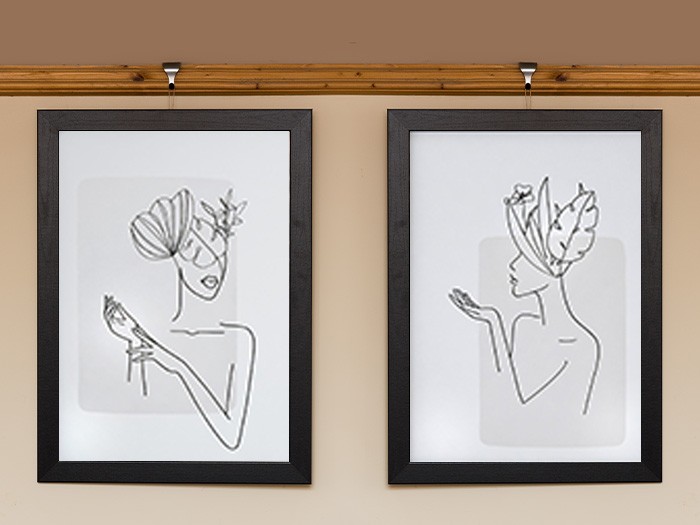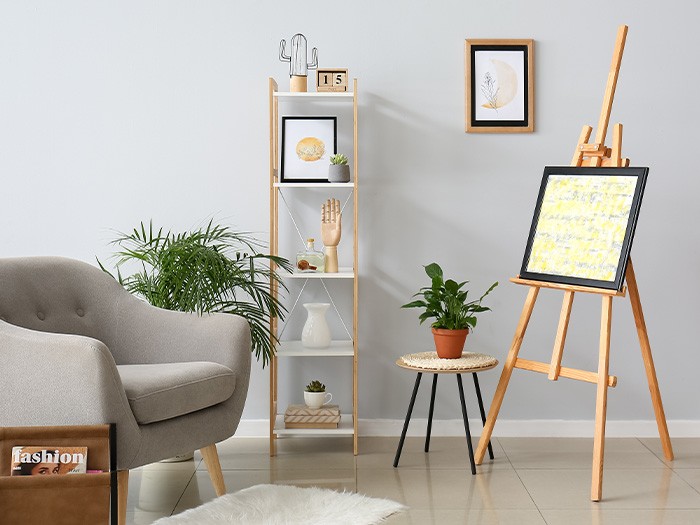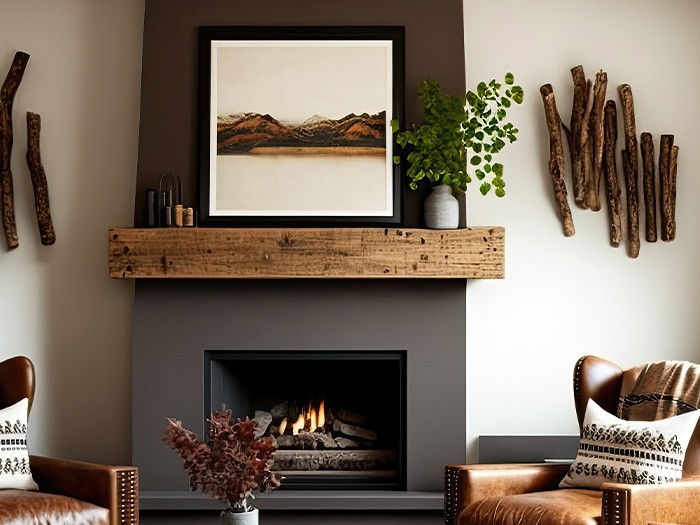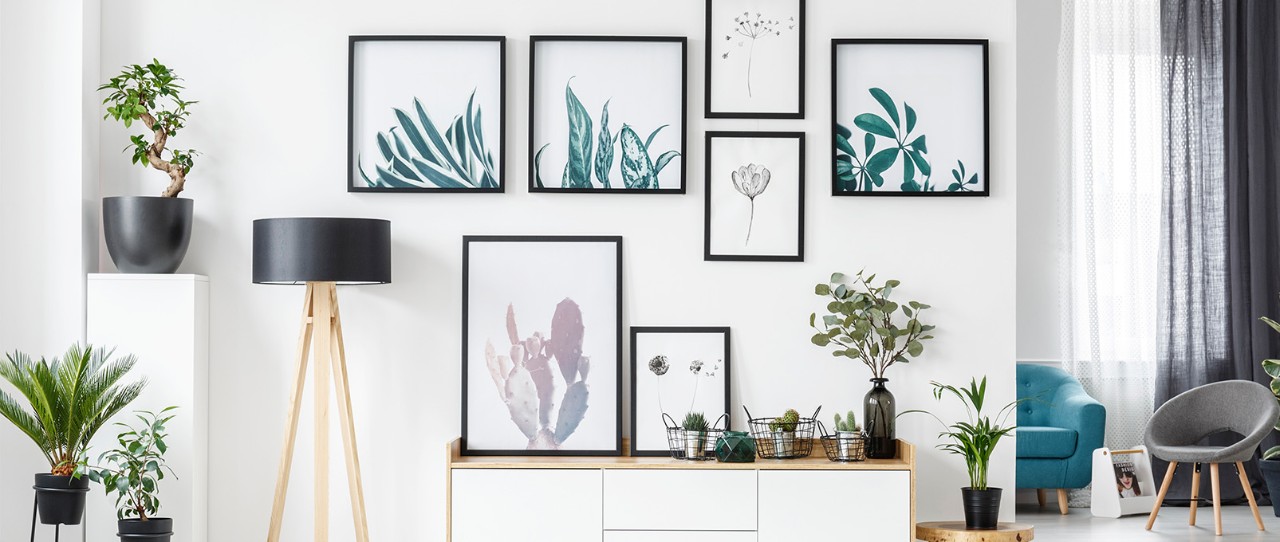Framed photos and artwork are a great way to add personality and character to otherwise blank walls. But maybe you have beautiful wallpaper you want to leave intact? Maybe you switch out art seasonally? Or maybe you’re just not that great with a hammer?
Whatever the reason, you can still display your favorites without making holes. Here’s how.
-
Picture-hanging strips. You’ll find these strips, which use adhesive to stick to the wall, in different sizes, styles and weight-compatibility ratings. Make sure you choose strips that are rated for the weight of your wall décor—and make sure you read all of the directions, as some surfaces aren’t suitable for these strips. (You’ll also need to remove the frame hanger off of the back of the frame before applying the strips.)
-
Picture-hanging hooks. Like the strips, these hooks attach to the walls with an adhesive backing. Unlike the strips, your frame won’t lie flush against the wall. Make sure to choose hooks that will support the weight of your frame; if you have a heavier piece, try using more than one hook to support it. And again, make sure the brand of hook that you choose is compatible with your wall surface.
-
Picture rail molding. If you live in an older home, you might already have a picture rail—a piece of molding that runs parallel below ceiling molding. If you don’t have one, you can find them at most big box stores.
The picture rail sits flat against the wall, but has a curved piece at the top where you place a picture hanger. After attaching a hanging cord or chain to the back of your frame, you then loop the cord over the picture hanger.
What’s great about a picture rail is that you can easily move your frame from side to side by moving the picture hanger, as well as easily adjust the frame’s height by adjusting the hanging cord.
Leaning. The “lean” is probably the easiest solution of all. Have a fireplace mantle? Use it to create a focal point for larger pieces of art by placing them on the mantle and leaning them against the wall. You could also rest larger pieces on the floor and lean them against the wall—or take advantage of space on top of your living room console.
This way, you can mix and match pieces, layer larger pieces with smaller ones and change them up whenever you feel like it, without hassle.








